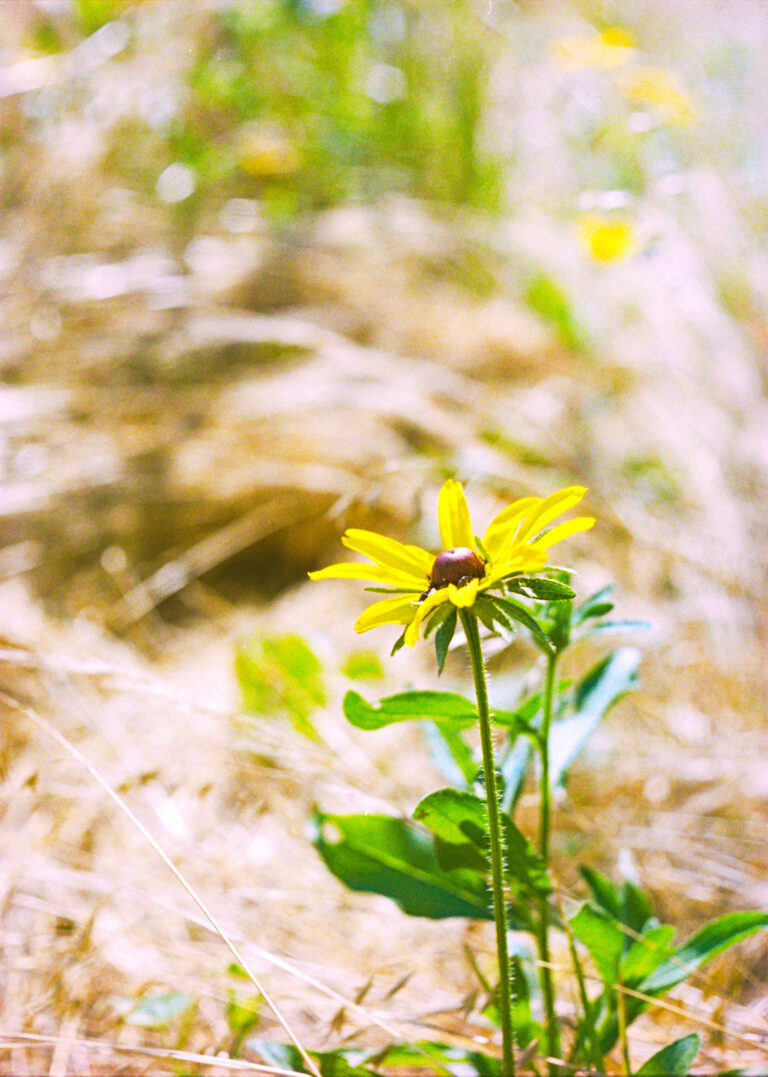I just got back from a trip to Cookeville TN, and boy are my arms tired. From carrying bulky film cameras around!
Some friends and I had been planning to rent a cabin in middle TN for months. I’d never been to Cookeville, so I was super excited for some photo opportunities in a new place. And being it was early May, the weather would be picture perfect.
So what photo expedition would be complete without Too Many Cameras™?
I hadn’t taken my Nikon F4 on a serious outing yet, so I was definitely bringing that.

I also decided to also take another relatively new-to-me camera, the Konica Pearl II.

If the Nikon is like a jet fighter, the Konica is more like a rag and tube biplane. In the end, I really enjoyed both though.
The First Roll
With my roster selected, the day of the trip rolled around and we were on our way.
I loaded up some Pro Image 100 in the Nikon. Autofocus and auto-exposure made snapping quick pics on the first jam-packed day super easy.

The Nikon may not be the ideal travel camera given that it weighs the same as a small dog, but with the first day under my belt I definitely wasn’t regretting bringing it.
But Suddenly…
The next morning, I finished up the Pro Image and went to load my next roll. But after five or so frames, the camera’s winding motor jammed, and a red error light illuminated.
I’d never seen the camera do this before, and I was a bit alarmed.
I accidentally activated rewind motor and wound it all the way back into the canister. I didn’t bring my film retriever, either. That was my last roll!
Well, the last roll of color. Thankfully I had some black and white HP5. I loaded that, but the same thing happened again. This time, when it jammed I was able to get it unstuck with the manual rewind. But now I didn’t trust the camera.
Switching to the Konica
That left me with two options: Trust the Nikon (which still made weird sounds when winding) or switch to the Konica.
I still had 3 or 4 rolls of 120 film, so the latter option sounded pretty appealing.
In contrast to the Nikon, the Konica is a fully manual camera. It doesn’t even have a built in light meter!
Shooting the camera is a simple 7-step process:
- Check the shoe-mount light meter and set the shutter speed and aperture accordingly.
- Focus using the weirdly-placed focusing knob
- Recompose and press the shutter button
- Realize you forgot to wind the shutter
- Wind the shutter
- Recompose and press the shutter button
- Forget to advance the film so you get tons of double exposures:

Jokes aside, I did genuinely enjoy using the Konica. I was a little worried about using it in a semi-fast paced environment, but it got a lot easier and faster as I got used to it.
It’s a great camera, very tactile and well-made too. Shooting it was a treat, and while I did get a couple double exposures, the ones that turned out made up for it:

Even with a relatively slow f3.5 lens, that 120 film depth of field is something else.
I wound up having plenty of 120 film to get through the rest of the trip. I even finished the roll of B&W in the Nikon without issues.

Conclusions
Everything seems to have worked out, but I’m still a bit wary of the Nikon.
In fairness to it, my copy of this camera has a LOT of miles on it. Even though I’d run a couple rolls through it without issue before the trip, I’m not that surprised. It’s earned the right to be a bit temperamental.
That said, the Konica is even older, by at least 40 years, and it performed flawlessly. I really enjoy automatic cameras, but old manual cameras can be so reliable. Mainly because there’s no features to break in the first place.
I get the feeling my Nikon may not be up for heavy use anymore. Maybe the occasional shooting I do at home will be easier on it. I still love this camera, but I probably won’t be spending a ton of money on accessories for it if it could conk out at any moment.
Before the trip, I thought I might sell the Konica because I didn’t really get along with it. But after getting used to it (and seeing some of the results from this outing) I think I’ll hold onto it.
Oh, and if anyone asks, those double exposures were artistic intent, okay?







Leave a Reply